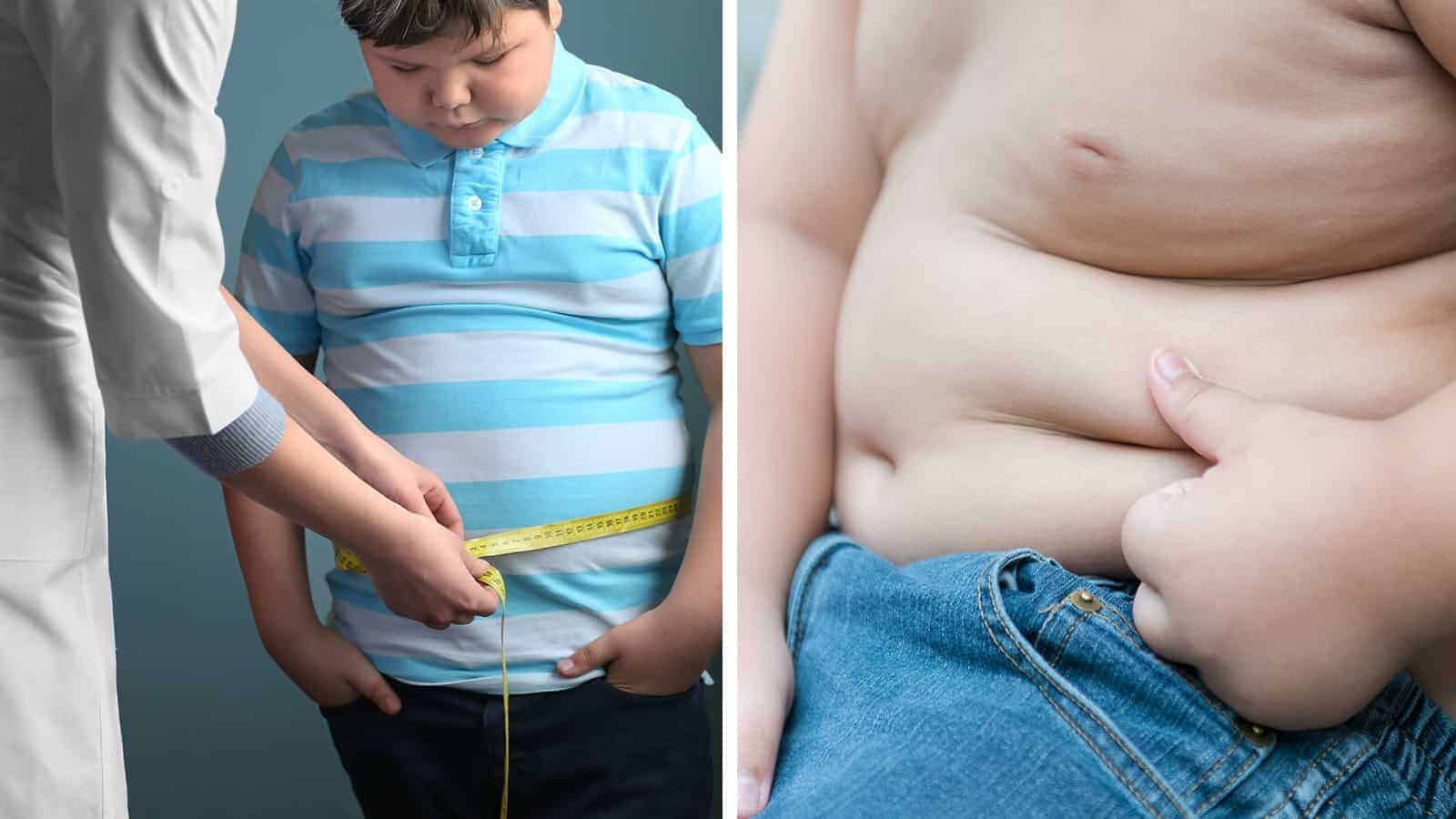This topic is uncomfortable, but it is one that society must no longer ignore. We want our children to learn to make healthier choices, so this conversation is one we must have. The obesity rates in the last 20-30 years have skyrocketed, and sadly, childhood obesity is no exception. Many children lack access to healthy foods, and well-meaning parents often resort to cheaper, processed options. Because of rising income inequality and the fast culture we live in, children’s health is greatly suffering.
According to the CDC, the prevalence of childhood obesity in the U.S. is as follows:
- The prevalence of obesity was 18.5% and affected about 13.7 million children and adolescents.
- Obesity prevalence was 13.9% among 2- to 5-year-olds, 18.4% among 6- to 11-year-olds, and 20.6% among 12- to 19-year-olds.
- The prevalence of obesity decreased with increasing level of education of the household head among children and adolescents aged 2-19 years.
- Obesity prevalence was 18.9% among children and adolescents aged 2-19 years in the lowest income group, 19.9% among those in the middle-income group, and 10.9% among those in the highest income group.
Obesity rates have tripled among children and adolescents over the last 30 years. When you look at the world around you, this shouldn’t come as a surprise. Sedentary lifestyles, fast food, and technology have permeated children’s lives, wreaking havoc on their health. Parents may have good intentions, but choose unhealthy options for their kids due to convenience.
Below, we’ll talk more about the reasons behind the obesity crisis, and how we can ensure better health for children. While the world may encourage ill health, children can learn better habits which enforce well-being.
Here are 10 main factors causing the childhood obesity epidemic
Here are the ten primary things causing overweight, and therefore unhealthy, children.
1 – Too many high-sugar, high-fat processed foods
In the last few decades, people have started turning to more processed, higher-calorie snacks, and meals. These types of foods are convenient and quick, but they typically have very few nutrients. As a result, children still feel hungry after eating, yet end up gaining weight due to eating too many calories. Some research shows that obese people actually suffer from malnutrition due to the quality, not quantity, of the foods they eat.Many studies link the higher consumption of processed foods with an increased risk of childhood obesity. This occurs because they usually don’t have a chance to burn off the excess calories consumed, leading to weight gain.
2 – Decreased physical activity due to sedentary lifestyles
Combined with an unhealthy diet, lack of exercise contributes greatly to the obesity epidemic. With the rise in technology and more sedentary living, children don’t have as much incentive or opportunity to play. Many schools have taken away recess time as well, which proves detrimental to children’s’ mental and physical health. Simply put, children were made to run and play, not study and memorize information for hours at a time.
Even if they get recess time at school, children still need more than 30 minutes of movement per day. After school and on weekends, many of them spend a large portion of their time indoors on technology. Parents who have busy schedules may find it easier to let the TV do the babysitting instead of playing with them outdoors.
3 – Lack of information about healthy food choices
Especially in lower-income households, children may not have access to information about healthy food choices. Kids mimic their parents’ example, and that includes what types of food they eat. If parents eat mostly processed foods, the kids will follow their lead because they don’t know any better. According to the World Health Organization, lack of information about healthy food choices contributes to the problem.
Schools should teach children about nutrition if parents don’t have access to knowledge about healthy food options. Parents might mean well, but just don’t have the resources or time to help kids make better decisions about food.
4 – Poor availability and affordability of nutrient-dense foods
In addition, children growing up in lower-income families may not have access to healthy foods. Especially in one-parent households, the parent may not have time to cook nutritious meals for children. As a result, they may resort to fast food or processed foods because of the convenience and low cost.
Poverty and obesity have a strong correlation, according to a study done by the University of Michigan. Among school districts in Massachusetts, researchers found that every 1 percent increase in low-income status led to a 1.17 increase in obese/overweight students. It only makes sense that if kids have access to more fresh foods, they will make healthier choices. Kids who grow up in low-income houses have a clear disadvantage when it comes to health, unfortunately.
5 – Marketing unhealthy foods specifically to children
The companies selling these unhealthy foods have a huge responsibility in causing the obesity crisis. Companies use bright colors, catchy songs, and fun cartoon characters to get kids’ attention, and it works. While parents don’t have to buy the products, they may just purchase them because they believe it will make their kids happy.
Marketing campaigns trick parents by saying the cereals or other snacks are fortified with vitamins, but they still contain tons of sugar. Have you noticed that the characters on breakfast cereals in the stores seem to be at eye level with kids? It’s almost as if the companies did that on purpose. (hmmm)
A report from the FTC found that the food industry spent $1.8 billion on marketing foods and beverages to kids in 2009. The top three ads directed to children were: fast food ($714 million), carbonated beverages ($395 million), and breakfast cereals ($186 million). Children (ages 2-14) saw an average of 10 to 11 television ads per day in 2016, or approximately 4,000 ads total. This doesn’t even account for all the other ads targeted to them via mobile devices or in schools.
6 – Unhealthy eating habits in the household
As we said above, children pick up on habits from their parents, which can be beneficial or harmful. If parents eat mostly processed, unhealthy foods, children will likely follow suit. For example, one study found that living in a single-parent household and having an overweight mother are linked to childhood obesity.
7 – Genetic factors
Obviously, genetics plays a huge role in the likelihood of developing obesity as a child or later in life. Some studies have found that body mass index (BMI) has a heritability of 25-40%. However, genetics account for only 5% of cases of childhood obesity, so lifestyle factors likely contribute the most.
8 – Using food to deal with stress or other emotions
Children growing up in stressful environments may learn to use food to cope with emotions. Extensive research links early-life poverty and adverse childhood experiences, such as abuse, to obesity in adults. Increasing evidence shows associations between these stressful situations and higher obesity rates in children and teens as well. High, prolonged stress levels disrupt important hormones and behavioral pathways in the brain, increasing the risk of obesity.
9 – Lack of access to safe places to exercise
Especially in lower-income areas, children may not have accessibility to safe, well-lit areas to play and exercise. Wanting to keep their kids safe, parents may encourage them to do more indoor activities instead. Even if children live in safe areas, they may not get much of an opportunity to play outdoors.
For example, in the past, many kids rode a bike or walked to school. However, nowadays, as many as 53% of parents drive their kids to school, according to surveys. They cite safety, long distances, and fear of child predators as reasons for driving their kids to school.
10 – Large portion sizes
Portion sizes have increased dramatically in the past 10-20 years. Consuming large portions can contribute to a caloric excess, leading to fat storage and obesity. Not surprisingly, people tend to eat whatever is on their plate, so more food equals more calories consumed.
How to reverse the childhood obesity crisis
- Teach children healthy eating habits. Everything starts at home, including our children’s food preferences. Lead by example, and try to eat as many fresh, healthy foods as you can. Don’t keep a lot of processed snacks in the house so they can learn to enjoy healthy food instead.
- Eat at home most of the time. Children greatly benefit from eating home-cooked meals. Not only do they get social interaction with their parents, but the meals will likely have fewer calories than at restaurants. Not to mention, you can control what you put in the meals and make them healthier.
- Limit their time on technology. Sadly, kids get exposed to thousands of unhealthy food ads per year. Try to limit their TV and tablet time so they don’t see these marketing tactics as often.
- Give them treats sometimes. Kids need balance in life, and that goes for their diets as well. If you restrict their diet, they will just want to eat more unhealthy foods to compensate.
Final thoughts on what’s causing the childhood obesity epidemic
Obesity among all age groups has risen substantially in the last few decades. It’s a multifaceted problem that involves many industries and governmental agencies, as well as parents. We have to do better for our children, and it all starts at home. By limiting their exposure to food ads and making them healthy meals at home, they will be well-equipped to make sound dietary choices in the future.

















 Community
Community

